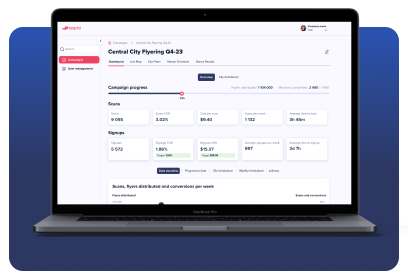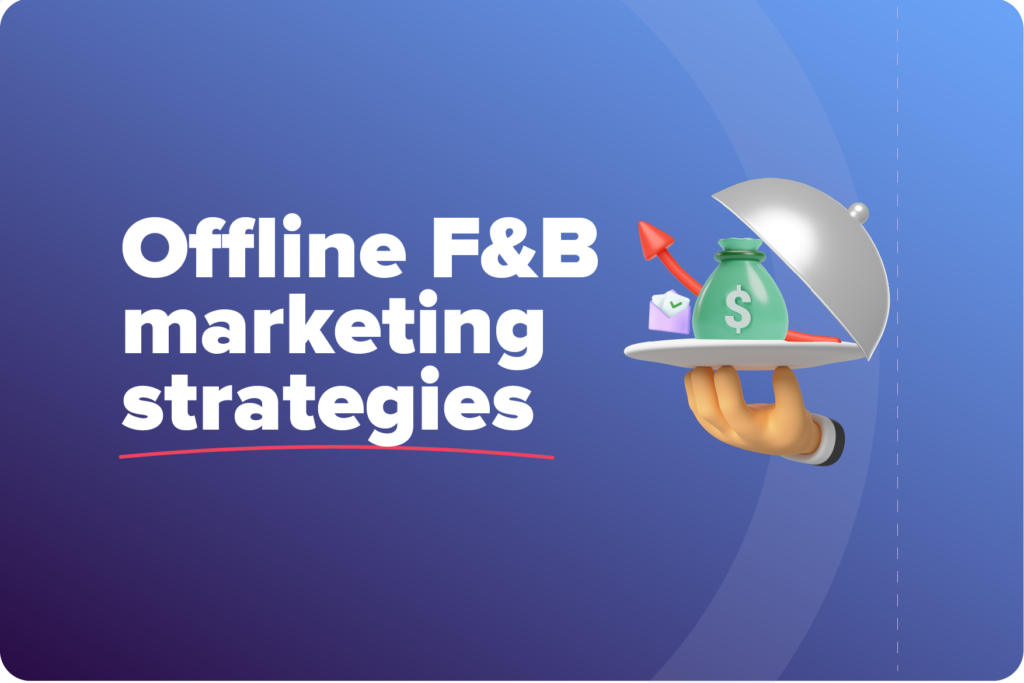Marketing Objectives: Why are They Important?
Marketing objectives are defined, attainable goals created to offer general guidance and drive actions. They are SMART marketing goals, which stand for specific, measurable, achievable, relevant, and time-based goals.
Marketing goals shouldn’t just be an arbitrary number; one should be able to link them to the company’s overall success. For instance, a marketing objective would be to boost web traffic by 50%.
However, how will you arrive there, and why will all of the traffic be there? When do you hope to reach that figure?
In addition to outlining a precise number, objectives also describe how you want to get there and how that outcome will affect the business as a whole.
Without marketing objectives, there is no clear direction in which to direct your marketing efforts. These objectives aid in tracking and measuring the success of your actions. They also help provide your team with a direction and target to work toward. Furthermore, knowing your goals clearly can help you decide which particular marketing strategies and tasks to use to get them.
How to Develop SMART Marketing Objectives?

The widely utilized SMART acronym is frequently employed when determining marketing goals to support the long-term goals of your company. You will be aware that SMART is used to evaluate whether goals set to drive various strategies or enhance all business processes are appropriate.
- Specific: Can problems or opportunities be identified using the information’s level of detail? Is the purpose specific enough to evaluate possibilities and problems in the real world?
- You should base your marketing objectives on specific indicators. Don’t just state that you want to raise sales; specify by how much, in either a percentage or a monetary figure.
- Measurable: Can a measure be created using a qualitative or quantitative attribute?
- Your goals must be quantifiable and specify how they will determine success. Increased brand recognition may be your goal, but your goal must define how you plan to achieve it.
- For instance, you may measure it by tracking a rise in organic product searches, social mentions, or social media followers.
- Attainable: Can the data be applied to boost performance?
- There isn’t much of an objective if it doesn’t alter worker behavior to help them perform better. You could wish to double your revenue, but is it a realistic goal to have?
- Make sure the goals you establish are sensible and doable and specify the procedures to achieve them.
- Relevant: Can the knowledge be used to solve the marketer’s particular issue?
- One of the main problems with goals is that they describe the destination but not how achieving that objective will affect the entire marketing plan. You should link the main goal of your company to your objectives.
- Time-based: Can targets for reviewing be defined for multiple time periods?
- Last but not least, objectives should specify a realistic time period for achieving the particular standard.
- The majority of marketing goals are based on the year or the financial quarter. However, this aspect might change depending on the goal and the amount of effort needed to meet the benchmark.
Maintain your strategic goals. Make sure all your team members understand the aim by making your objectives SMART and connecting them to your strategy and KPIs. Your team can stay on task with the help of marketing tools and strategies from Smart Insights.
Why are SMART Marketing Objectives Important?
Marketing teams may clarify their objectives, find areas for development, and develop successful advertising campaigns with the aid of effective SMART goals. You might increase your total revenue and strengthen your relationships with customers by implementing SMART objectives in your marketing campaigns.

But does this approach most suitable for your needs? To determine that, it is critical to grasp how to apply this technique to marketing.
- Creates a cohesive team: Marketing teams can talk about the parameters of the objective to better create a single purpose for their goals.
- Determines how to acquire data: To meet your marketing objectives, you may gather a variety of data, and the SMART technique can help you decide how to use it.
- Aids the team’s task prioritization: The team can boost overall productivity by comprehending the criteria of the goal-setting procedure and better understanding the importance of each assignment.
- Tracks your development over time: Teams can create more well-structured goals using SMART objectives as minor phases in a broader process.
How to Get Started With SMART Marketing Objective Planning?
The knowledge of the environment in which it operates should form the foundation of a brand’s objectives, particularly in terms of the possibilities now available to it.
It means that in the process of developing a plan, a situational analysis must come before goal-setting. SWOT analysis, which pushes marketers to consider Strengths, Weaknesses, Opportunities, and Threats, is one efficient situational analysis tool.
You would include a number of strengths, weaknesses, opportunities, and threats in a complete SWOT analysis, typically conducted through interviews with a diverse group of stakeholders. You can use SWOT to analyze a company’s overall operations and targeted marketing initiatives.
The results of a SWOT analysis or other situational analysis can be useful for SMART goal-setting in the following ways:
- You can identify associated strengths, weaknesses, opportunities, and threats from your SWOT analysis.
- Use them to help you create some goals that make use of your opportunities while taking into account your shortcomings and threats.
- Edit a goal to match the framework if it doesn’t meet a SMART criterion.
- After completing these four processes, you need to have a set of objectives that are appropriate for implementation and tailored to your situation.
An alternative strategy is to set SMART goals based solely on the SWOT-identified deficiencies.

Writing SMART Objectives
- Prepare yourself as well as other team members to ask a lot of questions when establishing SMART goals.
- The solutions will help you hone your plan and ensure the objectives are ones you can realistically achieve.
- While being as realistic as possible, writing SMART goals with an optimistic attitude is crucial. After all, you want to succeed in doing this.
SMART Marketing Goals Examples Based on Case Studies
The following are some of the SMART marketing objectives examples:
- Boost brand credibility
It becomes simpler to compete against rival businesses when brand authority grows since there are more options to engage audiences. Of course, your goods or services can set your company apart from the competition in the market, but what else can you offer them to make them happy?
Marketing greatly aids prospect education; now is your chance to carve out a position.
Related KPI examples include:
- The number of media appearances.
- The number of favorable customer interviews.
- Increased Profitability
In addition to reducing wasteful spending, marketing can significantly contribute to the company’s increased profitability. After identifying the most lucrative goods and services, marketing can devote more resources to promote them, generating more leads for the profit center.
Related KPI examples include:
- Number of fresh possibilities
- Rate of recurring revenue (often monthly).
- Increase interest in and demand for new items
Aligning your organization’s focus on promotion will be crucial if you are getting ready to launch or have already introduced a new service or product. You may tie the KPIs to social media. You can also associate KPIs with the volume of new product-related requests, opportunities in the sales pipeline, or both.
Related KPI examples include:
- The number of articles and questions for new items written.
- The number of brand-new product opportunities created.
- Reduce the proportion of lost sales/deals
Although sales can undoubtedly affect this goal, marketing can also have a big impact. Prospects enter sales with a certain attitude, thanks to marketing. Additionally, it will be quite difficult for a salesperson to shift direction and still clinch the purchase if the sales promotion is not correctly qualifying or setting expectations.
KPIs for e-commerce businesses could be statistics or projects aimed at lowering cart abandonment rates. In contrast, marketing can help with non-e-commerce by upgrading the content of websites or other resources that potential customers view before speaking with sales.
Related KPI examples include:
- Reduced percentage of shopping cart abandonment.
- Launched training programs and sales enablement resources in plenty.
Challenges in SMART Marketing

On the way to innovation, marketers frequently encounter a few basic obstacles. Overcoming these obstacles equip marketers to provide excellent customer experiences and remain relevant to their target audiences.
- Across-Team Cohesive Communication
All employees must be on the same page since many marketing teams contain individuals that play many responsibilities (such as content, SEO, and social media). Misunderstandings over messaging, campaign launches, or statistics might make it difficult to determine how to maximize your efforts across platforms.
Other departments that collaborate with marketing, such as sales and customer service, require effective communication of KPIs and campaign messaging. Silos no longer exist in these fields, particularly in the digital era. All customer interactions with a firm are now combined and have the power to encourage or deter purchases.
All divisions must know who to reach, the best messaging to convey to that audience, and the channels that are working and those that aren’t to combat muddled signals. There will inevitably be inconsistency in the campaign if each team examines analytics from separate platforms that can’t be averaged and compared.
Marketers must concentrate on collecting person-level information using a common measuring approach to reduce this. It will provide a reliable beginning point of data that business units can share between themselves for each department of the marketing team and other stakeholders.
- Working in an Artistic, Motivating Setting
Marketers should feel free to explore novel concepts, ideas, or a shift in the status quo in whichever business they choose to operate in. It is crucial for marketers to feel motivated and challenged when working in a sector that is highly regulated, B2B-focused, or just “not that fascinating” (in a good way).
Even if a business operates in a very clear-cut manner, think about what the marketing division might be able to do to better concentrate on innovation. Include a half-day or a few hours each week for brainstorming meetings or for staff to reflect on fresh ideas on their own.
The marketing division’s culture will also play a significant role. Marketers should feel free to ask questions or share ideas with their managers or peers to improve campaigns.
Many businesses have adopted a note-taking tool for group collaboration, such as a Slack channel, office chalkboard, or regular innovation meetings. Creative people are considerably more likely to come up with original ideas when they feel supported.
- Obtaining Stakeholder Support
When it comes to innovation, many stakeholders are more concerned with whether it affects the bottom line than how it is done. Here, marketing attribution is crucial because it enables teams to convince stakeholders of their importance.
Because of this aspect, marketers must make sure they have the attribution tools necessary to demonstrate the conversions and leads generated by their campaigns. More importantly, these tools help alert them to underperforming initiatives that they can adjust for a higher return on investment.
It is crucial to keep in mind when delivering this information that several stakeholders or executive members of the team are not themselves marketers. Thus, they want concepts to be communicated simply and concisely.
Asking the leaders of the bigger teams and the organization what they want to see can help you tailor your approach and win their support. Focus on the primary business objectives and describe how marketing can assist you in achieving them if they are unsure of what they are searching for.
- Utilizing the Proper Tools
The most effective marketing tools can significantly impact target progress evaluation as well as daily marketing measurement and optimization.
Marketers are unable to determine which ideas they should continue and which they should perhaps abandon in favor of fresh ideas. The case can be similar for those ideas that are functioning without the necessary statistics that accurately identify the effectiveness or failure of campaigns.
It takes skill to select the appropriate tools for a company’s marketing initiatives. Numerous tools are available, each with unique functionality, a unique user interface, and a distinct pricing range. Generally speaking, depending on their objectives and campaigns, a marketing division of a medium-sized to large-sized organization typically requires the following tools:
- Analytics/Data Tracking: What percentage of pages are converted? How long does the average visit to the site last? How are people responding to your messaging? A database analytics platform is essential for answering these kinds of queries.
- A tool package like Ahrefs or SEMrush’s SEO tool suite can help with keyword research, ranking tracking, on-page SEO analysis, and other tasks. These have a wide range of features and costs, so do your research and take advantage of free trials to see which is ideal for you.
- Social Media Marketing: Program-and-response systems like Buffer, SproutSocial, and Hootsuite let advertisers plan social media postings, monitor clickthrough rates, and pinpoint their most effective content. Some additionally let users reply to reviews, comments, or private messages from the main dashboard.
The use of appropriate technologies not only facilitates project planning and execution but also allows for accurate campaign optimization and measurement.
From SMART to SMARTER Marketing Objectives
By evaluation and re-adjusting, some have created the definition of SMARTER objectives, which demonstrates the necessity of periodically reevaluating the usefulness of SMART targets. You might wish to compare your present strategy to these definitions of digital marketing objectives since they clearly demonstrate how varied they are.
Letter
SMART Marketing Objectives
Alternatives
S
Specific
Stretching, Sustainable, Significant, Simple
M
Measurable
Manageable, Motivational, Meaningful
A
Attainable
Agreed, Appropriate, Actionable, Assignable, Achievable, Ambitious, Adjustable
R
Relevant
Realistic, Resourced, Results-Based, Reasonable, Results-oriented
T
Time-bound
Trackable, Timed, Time-specific, Time-framed
E
Evaluate
Evidenced, Enjoyable, Ethical, Engaging
R
Reevaluate
Revisit, Rewarding, Recordable, Rewarded, Reaching

SMART Marketing Objectives Examples
Here are some SMART marketing objectives examples in detail:
- Fresh services are products
The main duty of marketing teams is to market a company’s goods and services to its target market. Marketers can use the SMART method to develop fresh approaches to customer data collection and plan fresh content, such as targeted blog entries, product demos, and commercial commercials. You can discover which marketing tactics help a team to complete each phase by setting up a systematic goal-setting procedure.
Consider a business that intends to boost daily sales by 6% by launching a product in trade exhibitions to illustrate how to employ SMART goals while introducing new goods and services. They calculate so each trade fair can increase their income by 2% over a month to achieve this specific aim. Following a discussion of their resources, they decide to join one trade fair per month, indicating that they will be able to reach their target in three months. They then establish a timeframe for preparedness.
- Boost user interaction on websites
Marketing departments frequently devise strategies to improve website traffic. To determine which tactics work best and keep track of the volume of website traffic, you can develop SMART goals. It is possible to improve a brand’s search engine visibility and discover new websites to host online adverts. You can use the SMART technique to discuss each step of this procedure.
Consider a brand that wants to achieve a URL rank of five or above on key websites by the end of its fiscal year, for instance. They examine their website to identify a practical and realistic plan and decide that using more SEO keywords and updating the material once a week will result in better ranks. After reviewing their budget and human resources, they determine that this aim requires a three-month schedule to successfully execute a new website approach.
- Employ social media marketing techniques
Marketing departments occasionally use social media platforms to promote a business’s brand and interact with potential customers. Using SMART goals, you can decide how to promote content using statistics and respond to customer feedback.
You can also make an exact timeline for social media efforts, which are an important component of this kind of marketing. Teams can better plan each step of the process when they are aware of the campaign’s overall goal.
Think about a social media promotion team that uses the SMART strategy to gain 20% more followers in a year. They examine analytics to identify areas for improvement to evaluate this particular goal.
They discover through surveys that readers respond favorably when the team posts three articles per day on subjects with pertinent metadata. They look at their facts to ensure their initial objective is both doable and feasible given their current approaches and create a precise time frame.
- Locate fresh leads
Leads are potential clients who have expressed interest in the goods or services offered by the business. You can develop SMART targets to boost the number of identified prospects and retain them as long-term clients.
The team can create more effective communications campaigns and figure out how to utilize customer information for tailored marketing content by analyzing your present methods.
Take a look at the brand below as an illustration of how to employ SMART goals to locate new leads. The brand wants to boost its purchasing rate by 7% in thirty days.
The marketing team analyzes customer feedback to gauge this particular objective and learns that many customers discovered the company due to influencer marketing campaigns. They finally change their time frame to three months to ensure the objective is feasible and attainable given their available resources.
- Ensure customer satisfaction
Because satisfied customers are likely to spread the word about a company to their social networks, marketing teams frequently build relationships with their clientele.
A SMART goal-setting approach can help assess customer interaction procedures and motivate adherence. You can identify new ways to customize adverts and run more effective sales events by following a guideline to reflect on your client service procedures.
Think about a company, for instance, that wants to grow client recommendations by 11% within the upcoming fiscal year. The marketing team examines data to gauge this particular objective and discovers that client recommendations rise immediately following a favorable national rating for their service.
To assess which approaches would be more successful, they look into their email marketing from the past and their sales techniques. After that, they change the value of their initial aim to one that is more feasible and realistic given the time frame.
- Increased promotions in person
Marketing departments occasionally employ in-person strategies to raise customer perception of a company’s goods and services. You may evaluate its efficacy against digital tools and schedule in-person sales events using SMART targets. Applying the SMART method, you can discover the most beneficial techniques for spreading material locally.
Consider a brand that wants to use a new subscription model to specifically double annual revenue. The marketing team monitors the pace of new subscribers to gauge this and finds that more customers sign up for the service following team appearances at conferences. To increase subscriptions, they decide to increase their conference attendance.
However, they first assess their financial situation to ensure their initial objective is both attainable and practical. After that, they would change the objective to a 10 percent increase in total income in six months to provide a more precise schedule.
- Create an email list of recipients
To promote brands, marketing departments build email subscriber lists. The SMART technique can help analyze customer trends and improve email programs. You can evaluate the best ways to update subscribers and identify fresh approaches to grow the list of subscribers by assessing your strategy using SMART goals.
Consider a business that aims to boost email subscriber-driven revenues by 2%, for instance. The marketing team uses data from subscribers to measure this precise goal and finds that giving frequent discounts accelerates sales. They then see that raising the goal to 5 percent is still feasible and realistic. Then they decide on a six-month timeline and allocate assignments.
The Bottom Line
The most effective marketers in their field are able to demonstrate the value of their work. But they never let their ego get in the way of keeping up with emerging marketing trends.
Marketers must remain current and receptive to new ideas as digital marketing develops with new techniques and tools. Innovation may play a crucial role in any team’s advancement by working with other teams and being sure to measure results with data accurately.
SMART marketing objectives are a surefire approach to generating ROI when used in conjunction with inbound sales and marketing techniques. They compel you to consider your actions carefully in relation to the outcomes you hope to achieve. SMART goals aid in eliminating marketing based on misconceptions.






